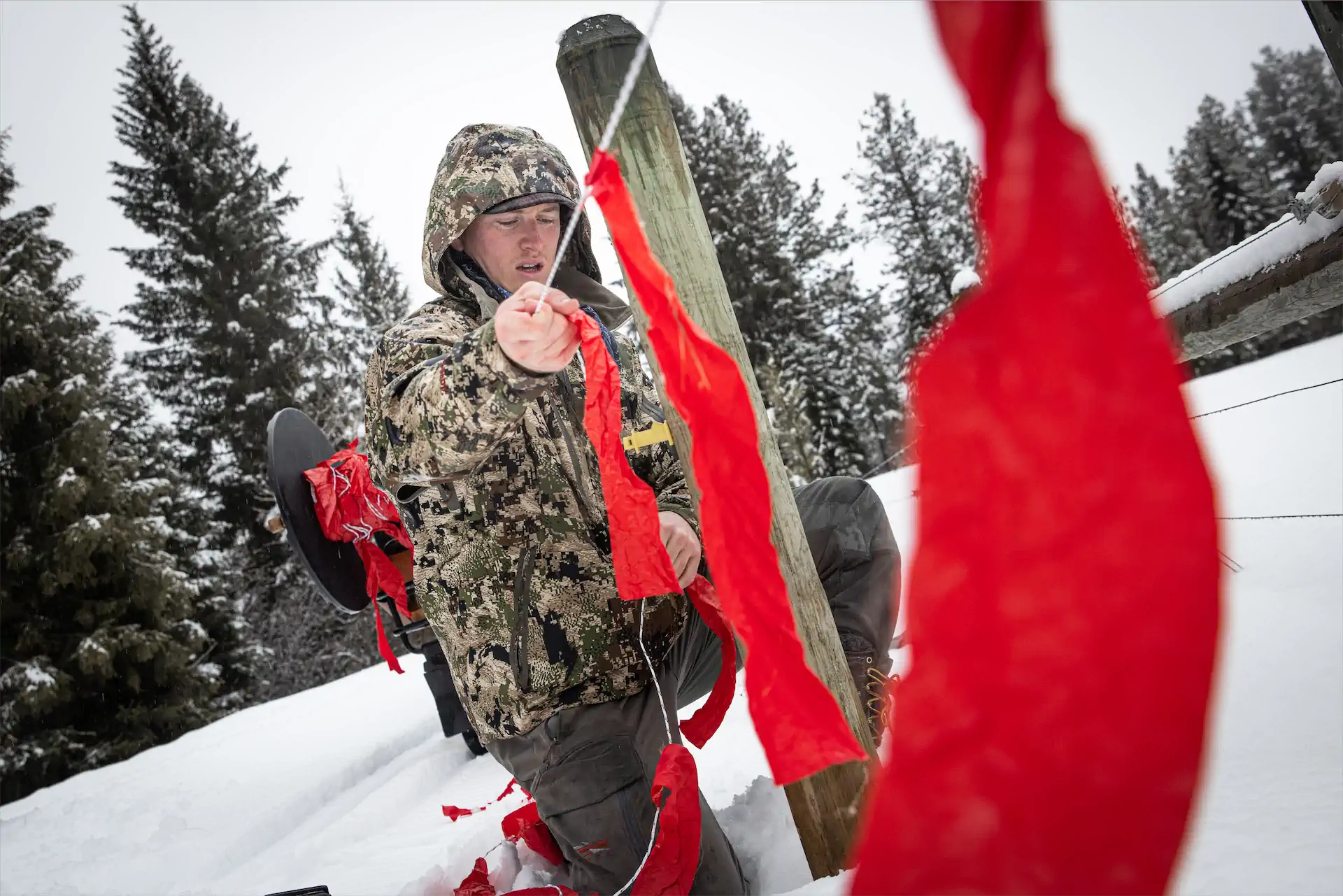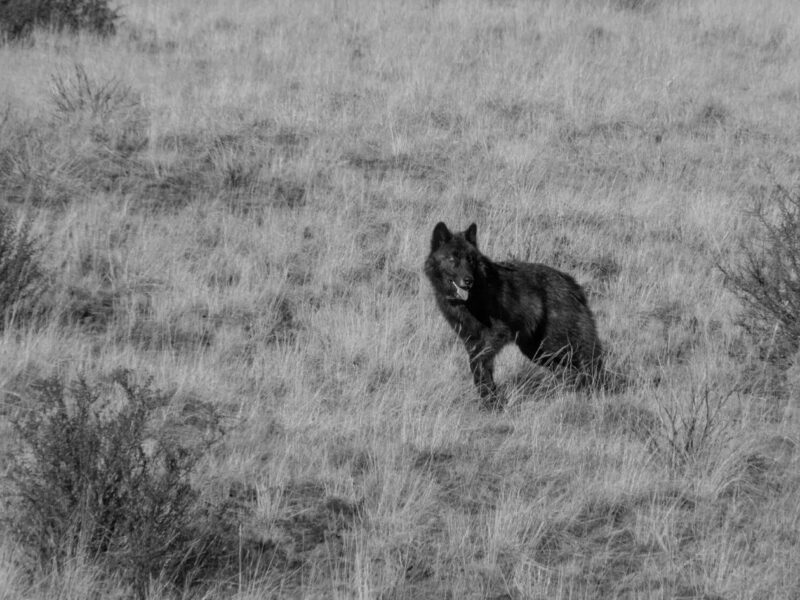Wayne Slaght stares out across the Two Creek Monture Ranch at the state wildlife managers unspooling strips of red fabric that now encircle his calving lot. A breeze coming off the southern end of the Swan Range animates the flags, which wave at him as he braces against the stinging March cold.
Inside the flapping perimeter, calves test their newfound mobility, romping and kicking at the air before running back to their mothers to nurse. Slaght knows better than most that the calves need to develop their strength quickly to stay with the rest of the herd. Soon their lives may depend on it: Predators are gathering, they are hungry and they are close.
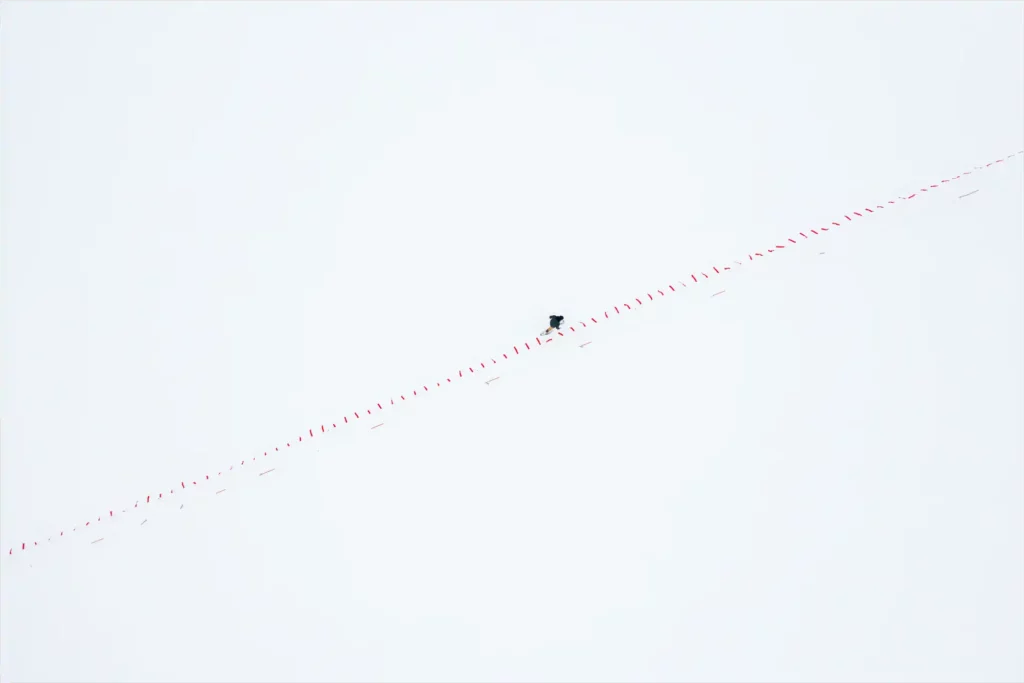
Rain, sleet or snow, conservation partners work with landowners to protect livestock and habitat alike. Montana Wildlife Services specialist Adam Baca, seen here patrolling a fladry perimeter on a cold February morning, works to provide ranchers with tools to prevent wildlife conflict.
Fladry is a technique that has been protecting livestock for centuries. As far as conflict prevention goes, it’s pretty straightforward: Strips of colored fabric attached to fencing flap around in the wind to confuse and spook would-be predators — more so when attached to an electrified line — and it provides a nonlethal tool for sharing landscapes with large carnivores. As spring means calving season for many ranches across the West, it also means animals like wolves and grizzlies can be drawn in for an easy meal while cattle are vulnerable.
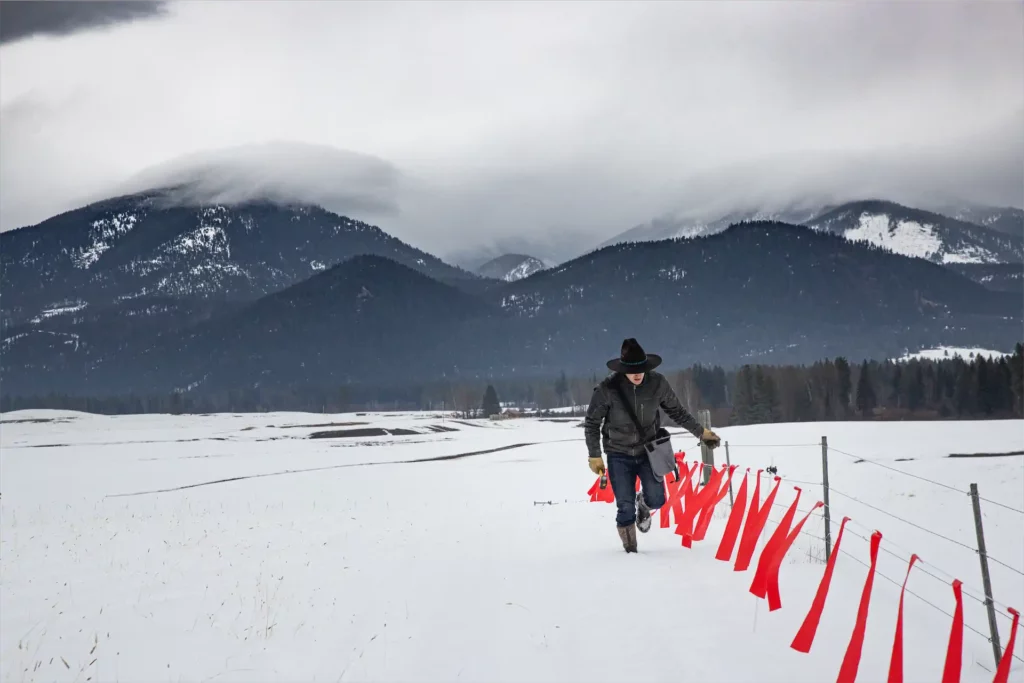
“I hate the look of that stuff. Looks like a used car lot. But it works.”
Wayne Slaght
Caught Up in Recovery
Slaght has lived on the Two Creek Monture Ranch his whole life, and he and his family have managed the cattle ranch since the early 1980s. Located in the lowlands along Montana’s legendary Blackfoot River, Slaght has seen an influx of grizzly bears and wolves. Since grizzlies were listed as threatened under the Endangered Species Act in 1975, they have rebounded from just a couple of hundred individuals in the entire Lower 48 to more than 1,100 in just the Northern Continental Divide Ecosystem alone — an area just north of Two Creek.
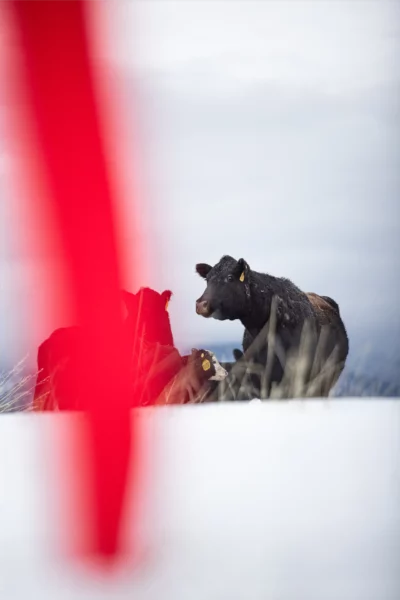
Similarly, gray wolves were nearly exterminated from the Lower 48 by the early 1900s through government-sanctioned eradication programs that included hunting, trapping and poisoning to clear the landscape for agriculture. Since the 1970s, wolf protections and reintroduction efforts have resulted in some 6,000 individuals south of the Canadian border, with roughly 1,700 inhabiting the Northern Rockies.
Whether or not the trajectory of grizzly and wolf recovery deserves praise or protest depends on who you ask, especially if they happen to be watching apex predators stroll through their yard and around their livestock.
“It’s fine that most Montanans want to have grizzly bears around,” Slaght explains, “but for us it’s a headache. There are 10 to 12 bears on this ranch every day during the summer. We’ve got grizzlies 50 feet outside the front door of our house, and any time that we go out to check cows, we have to be aware of them, because they’re out there.”
It’s usually at this point you expect to hear a rancher launch into a tirade about how bears and wolves are threatening their livelihood and should be exterminated outright, but that oversimplification fails to recognize the complexity of the issue or recognize the creative approaches many ranching families are utilizing. Let’s be clear, Slaght is seeing red, he’s just seeing a different kind. Looking back out over the calving lot, he watches the wildlife management specialists quickly pay out some three miles of red fladry from a rig attached to the back of a snowmobile.
The tricky part that both ranchers and wildlife managers are trying to deal with is that predators are clever, and eventually the fladry’s novelty wears off — generally within a few months. But when it’s used in combination with other tools like five-wire electric fencing, foxlights, drive-over electrified mats and participation in carcass removal programs to prevent dead livestock from attracting scavengers, fladry can be part of an effective toolkit to coexist with predators on critical habitat and working lands.
Still, that toolkit can be expensive. A single mile of electric fence can cost $18,000; a steel shipping container used to protect grain from bears can cost $3,500; a mile of fladry, nearly $5,000. For many ranch families operating on tight margins, those costs add up quickly. What might be the most creative part of Slaght’s approach to livestock depredations is his willingness to partner with conservation groups and agencies to help offset the cost for nonlethal technologies.
Collaboration in Action
Adam Baca, the first-ever nonlethal conflict prevention specialist for Montana Wildlife Services, has helped establish the fladry project at Two Creek for the past four years, and recognizes relationship-building as a necessary pathway to lasting solutions.
“Partnerships are the only reason these large-scale prevention measures work,” he says. “The landowner has to believe the tools will work and then allow them to be used on their property. Tools such as electric fences and fladry require timely installation and regular monitoring. Working with partners reduces the time investment from any one partner and makes the tool more successful in the long run. Collaborations like this show that people working together toward a common goal can far outpace what an individual can accomplish.”
In addition to Montana Wildlife Services, entities like Blackfoot Challenge, Defenders of Wildlife and Montana Fish, Wildlife and Parks lend time, personnel, and resources to protect livestock, wildlife and people alike.
“We have not had a grizzly bear depredation in over 20 years, and we haven’t had a wolf depredation in probably 13 or 14 years, so that tells me that something we’re doing is working.”
Wayne Slaght
It’s having an effect
“We have not had a grizzly bear depredation in over 20 years,” Slaght says, “and we haven’t had a wolf depredation in probably 13 or 14 years, so that tells me that something we’re doing is working.”
He’s not the only one who has noticed. In 2017, the Two Creek Monture Ranch was awarded the Montana Environmental Stewardship Award by the Montana Stockgrowers Association (MSGA), in part because its nonlethal approaches to addressing predator depredations were so effective that they were soon adopted by other ranches in the area.
“As ranchers, it sometimes seems like urban America would rather have us gone than the bears and wolves,” Slaght says, “but we’re the first true environmentalists. I know there are a lot of interpretations of that word, ‘environmentalist,’ but we take care of this land because we love it here. This is the only life I know. We get a bad knock in agriculture about how we’re abusing the land, but if we’re not taking care of it to the best of our ability, we’re not producing and we’re not making money. We care about the land. We care about both our livestock and the wildlife: those animals are here, and they’re part of an environment and they’re going to be here, so we have to learn to deal with that.”
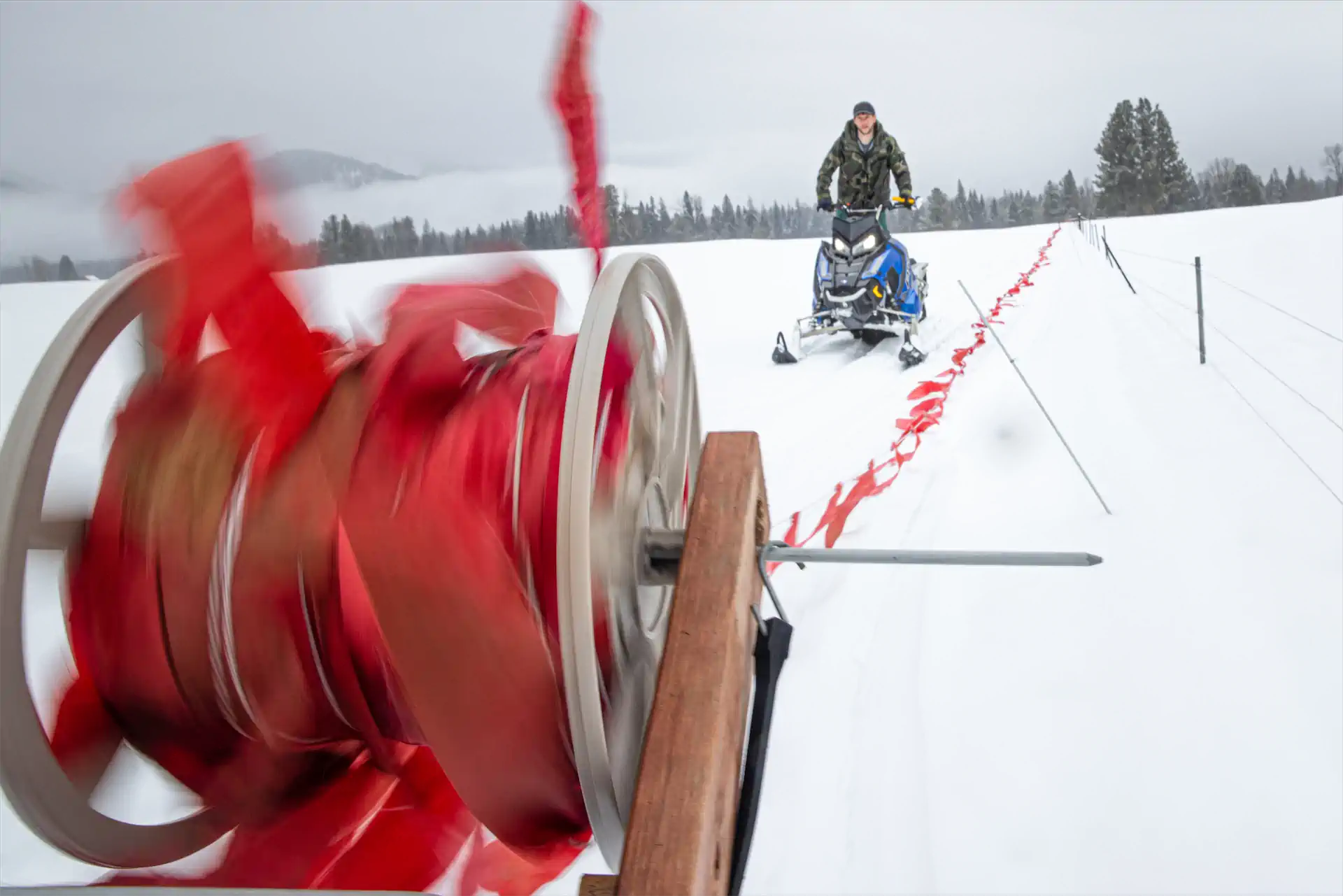
Intact Ecosystems
Jay Bodner, the executive vice president of MSGA, recognizes the challenges Two Creek had to overcome to reduce predator conflict. “It takes a lot of work to get there,” he says. “For people to think, ‘I’m just going to take a model from the Blackfoot Valley and implement that everywhere across the state,’ [they] will realize it’s not that easy. It takes some really driven individuals, from landowners to NGOs to sportsman groups to agencies. You have to have the right people, and you have to be in it for the long term, because those relationships just don’t get built overnight.”
Slaght, too, knows that different situations mean different approaches. “Every ranch, every chunk of ground in Montana, is different,” he says as he gestures toward the jagged peaks in the Bob Marshall Wilderness behind him. “Each landscape will have a different aspect on how wildlife is going to get from point A to point B. There are numerous things that we’re doing that might not work statewide, but if you can be somewhat ready and know who to contact when those predators start coming in, that’s key.”
Tyler Parks is one of those people to contact. The Region 2 wolf specialist for Montana Fish, Wildlife & Parks seeks to create pathways for ranchers to continue their way of life while stressing their role in maintaining healthy wildlife populations and preventing habitat fragmentation.
“You can’t manage wildlife by looking at public land alone and be successful,” he says as he loads another spool of fladry onto the back of his snowmobile. “You’ve got to include everybody, and that’s why we’ve got to work with ranchers. If they can be successful, then we’re going to continue to have an intact ecosystem, because they’re going to be able to keep that property. If they can’t be successful at what they’re doing, they’re going to sell it, and what we’ve seen is a lot of people who are willing to buy little chunks of land and put their own cabin on them. The more cabins you get, the more conflicts you’re going to have, whether it’s people’s pets, their garbage or whatever else they bring to fragment a landscape. With Two Creek, it’s a lot of land that’s pretty pristine, and they’re doing a good job managing their cattle. To not help support that would be a big mistake for wildlife.”
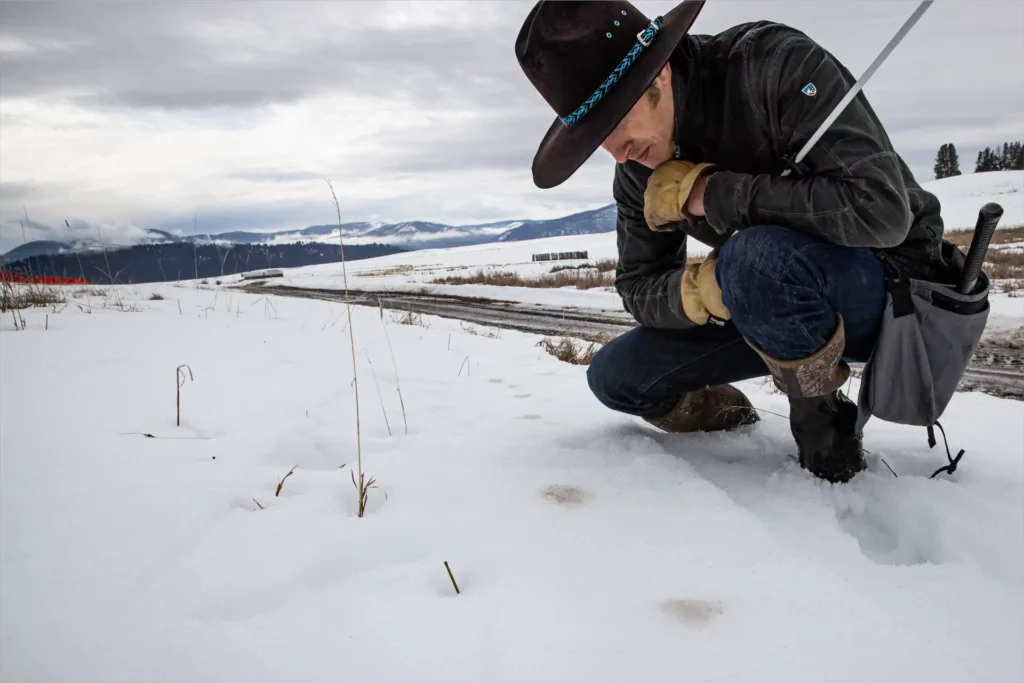
Montana Wildlife Services specialist Adam Baca surveys coyote tracks near the fladry perimeter. The tracks indicated the animal approached the fence, was confused by the fladry, and eventually left the area.
Passing It Down
Now in his 60s, Slaght is preparing to transfer those management responsibilities to his sons, Grant and Ben. “I want to make sure we’re taking care of what my dad has built and put together here,” Ben says, “You take the time and sweat and energy he’s put into this place, and my brother and I both respect what it means to him, so we’re going to try to keep it as good or better than how he left it to us.”
Although they’ve been a part of helping the operation grow, Ben and his brother will be faced with continued increases in input costs and intensifying pressures from grizzly and wolf management legislation. Despite the inevitable challenges, the Slaght sons have seen their father navigate hardship, collaborate, practice humility and respect for the land and still maintain an award-winning ranch.
There are those who are quick to draw lines between conservation and ranching, but at Two Creek, those lines just so happen to have fladry attached to them, and that means something. Out here, the only red flags are the ones that flap in the wind, a signal of a shift that protects ranchers’ way of life, the working lands they rely on and the wildlife that makes Montana’s landscape whole.







